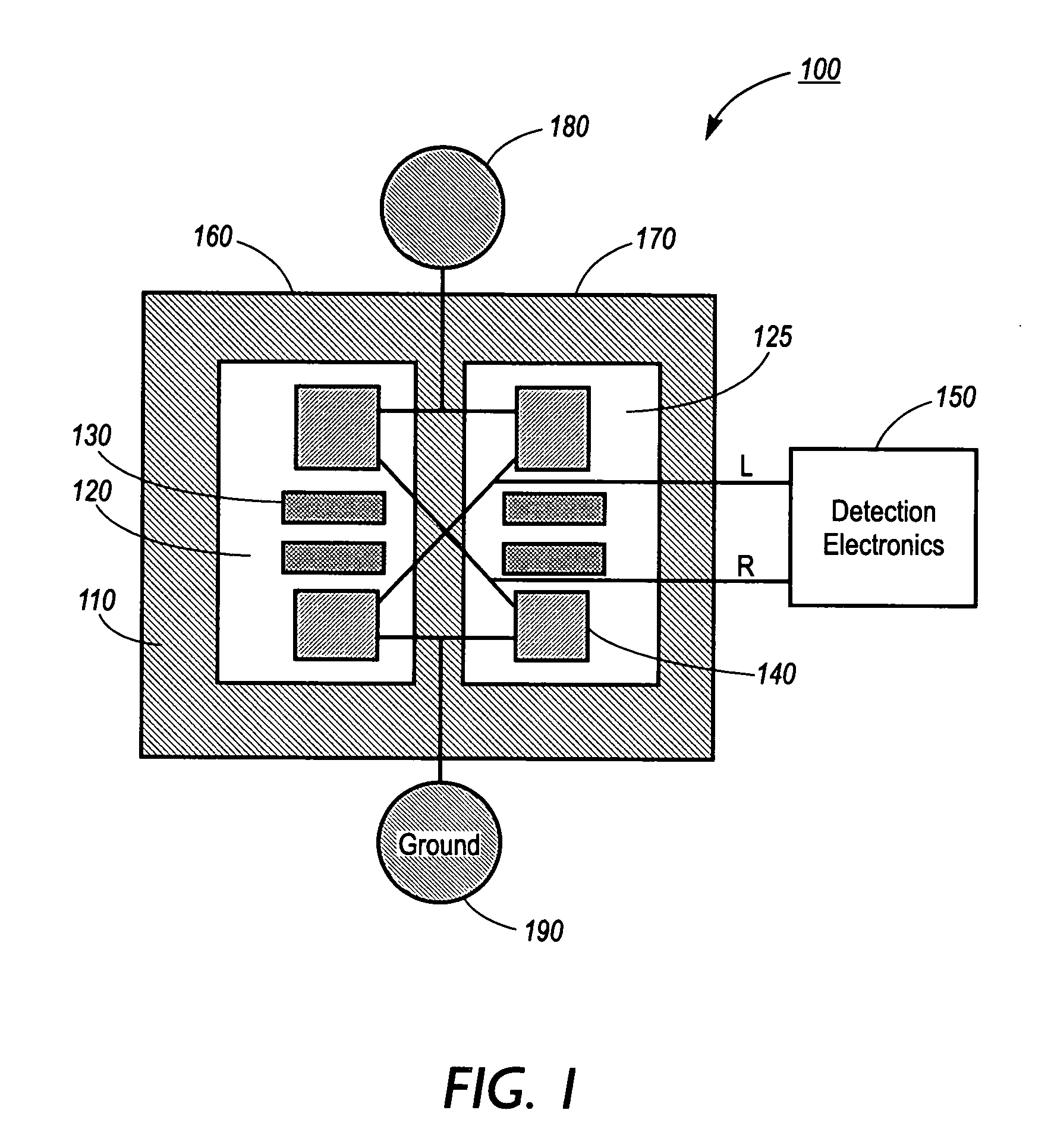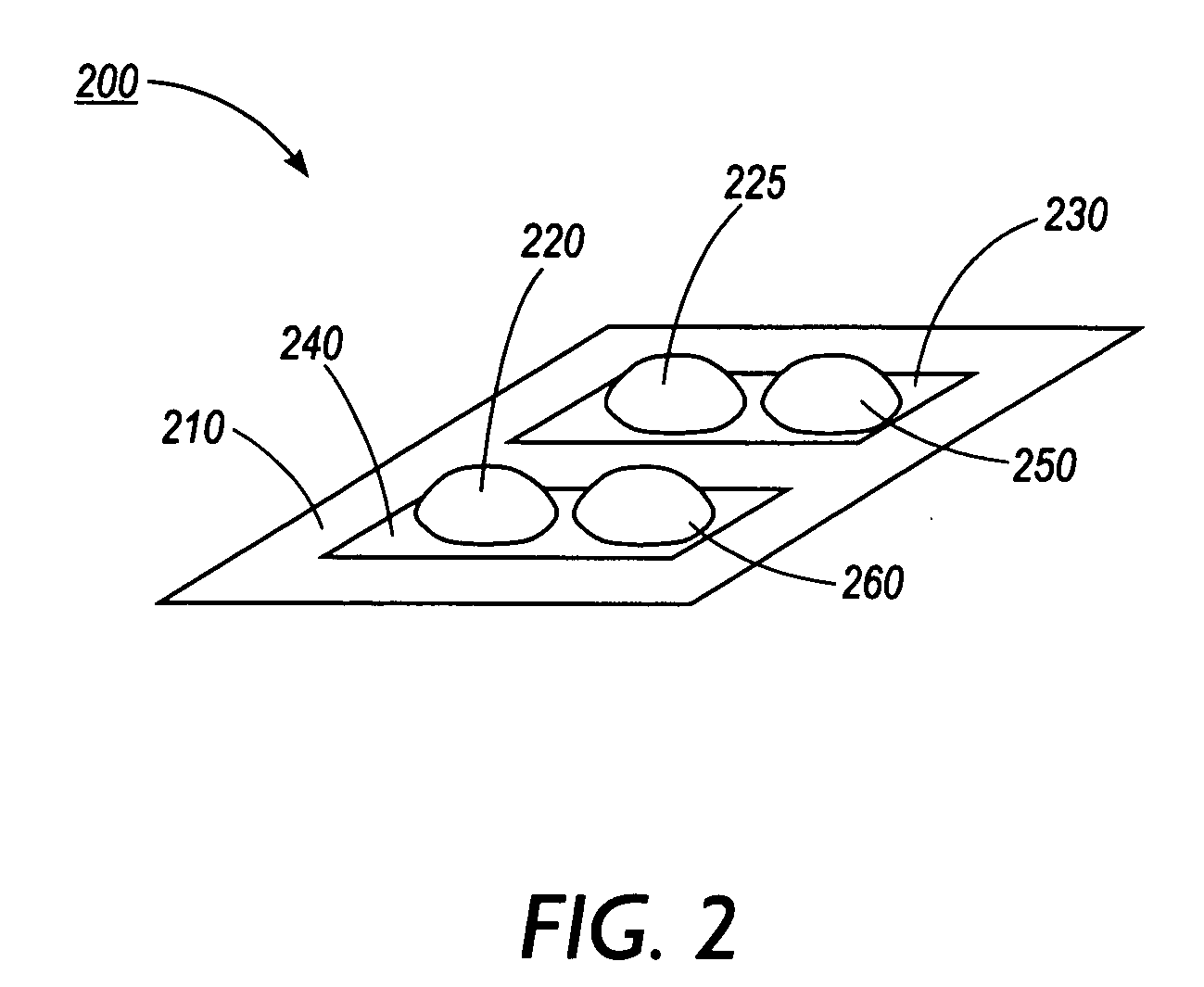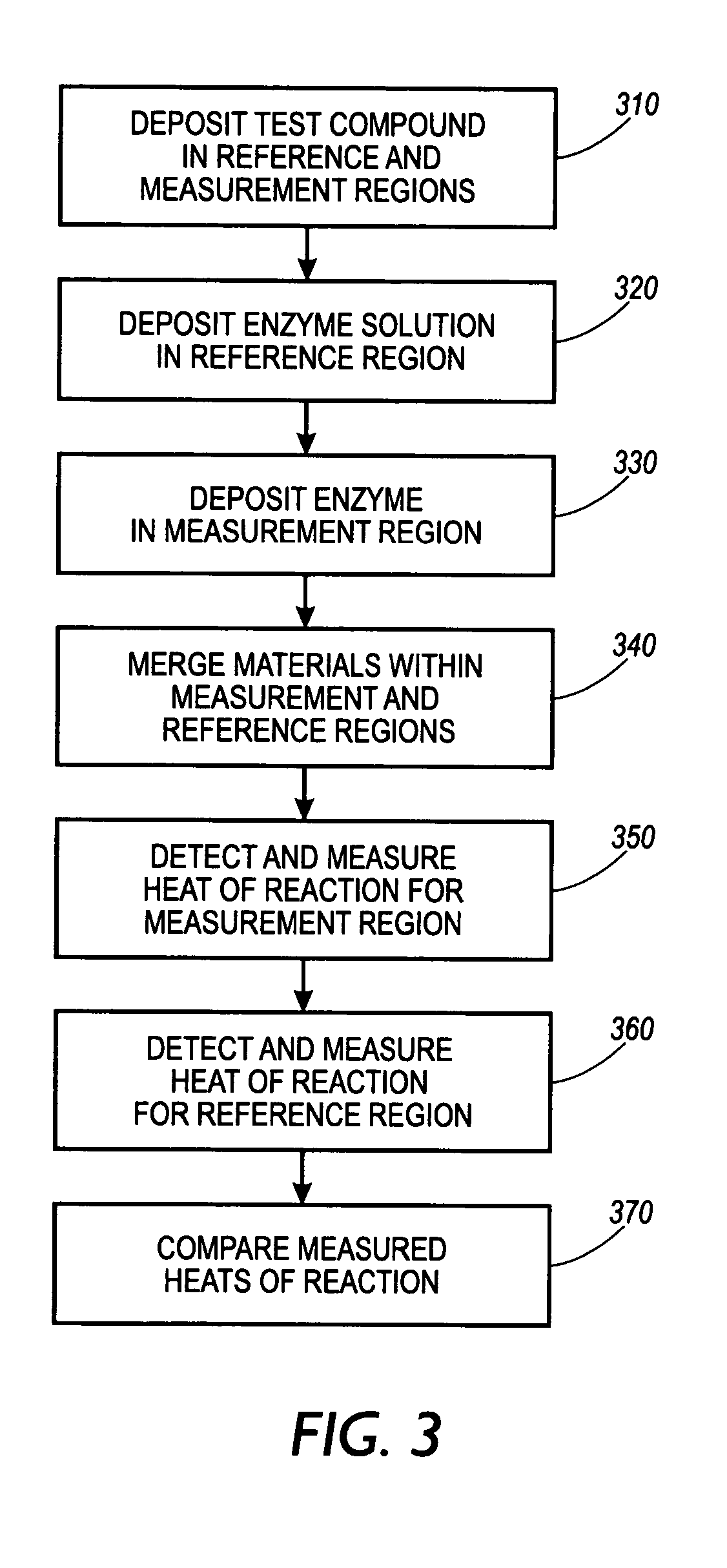Screening for ligand binding at specific target sites
a technology of ligand binding and target site, which is applied in the direction of instruments, material heat development, heat measurement, etc., can solve the problems of adding steps and cost to the assay, not good therapeutically for a drug candidate, and inability to easily distinguish between inhibitory binding at different sites
- Summary
- Abstract
- Description
- Claims
- Application Information
AI Technical Summary
Problems solved by technology
Method used
Image
Examples
example 1
[0080] Calculation for competitive binding of substrate S and test ligand L to enzyme E. Conditions are such that the substrate does not undergo reaction. For example, E could be an ATP kinase, S a substrate, and no ATP is provided; the substrate will not become phosphorylated because the ATP is absent. Optionally, a non-hydrolyzable ATP analog could be present, such as adenylyl imidodiphosphate (AMP-PNP) or adenosine 5′-[γ-thio]triphosphate (ATP-γ-S). Binding of substrate to enzyme (KS is the dissociation equilibrium constant) is modeled by the following reaction, where E is free enzyme, S is free substrate, and E·S is enzyme E with substrate S bound to it: E+S->E·SKS=[E][S][E·S](1)
[0081] Binding of test ligand to enzyme (KL is the dissociation equilibrium constant) is modeled by the following reaction, where E is free enzyme, L is free test ligand, and E·L is enzyme E with test ligand L bound to it: E+L->E·LKL=[E][L][E·L](2)
[0082] In these equations, square brackets ...
example 2
Competitive binding of substrate S and test ligand L to enzyme E at higher KS. At larger KS, the substrate is not as effective at blocking binding by a test compound to the substrate site.
[0092] Consider the following conditions: [0093] KS=100 μM for binding of substrate to enzyme [0094] S0=total concentration of substrate=2 mM [0095] E0=total concentration of enzyme=5 μM [0096] L0=total concentration of test ligand=7.5 μM [0097]ΔHL=−10 kcal / mole for binding of ligand to enzyme [0098]ΔHS=−1 kcal / mole for binding of substrate to enzyme
[0099] For these parameter values, Table 2 lists the calculated differential signal to be expected as a function of KL, the dissociation constant for the test ligand. For test ligands in high-throughput screening, KL is not usually known beforehand, so Table 2 indicates what range of KL will yield hits in a screening study. Whereas the substrate in Example 1 will block test ligands down to about KL=1 nM, the substrate in this example will only block d...
example 3
[0100] In the following example, consider the binding of a blocking agent B (e.g., a previously identified ligand for a particular binding site) and simultaneous binding of a ligand L to an enzyme E. In this example, we are screening for binders to sites other than the binding site for the blocking agent B, which is the opposite of the case in Examples 1 and 2. In the measurement region of a nanocalorimeter or other measuring device, we combine a drop of enzyme and blocking agent with a drop of test ligand and blocking agent. In the reference region, we combine a drop of blocking agent (no enzyme) with a drop of blocking agent and test ligand. The nanocalorimeter measures the difference in heat generated in the measurement versus reference regions. Conditions are such that the blocking agent does not undergo enzymatic reaction.
[0101] Binding of blocking agent to enzyme (KB is the dissociation equilibrium constant for the blocking agent) is modeled by the following reaction, where E...
PUM
| Property | Measurement | Unit |
|---|---|---|
| size | aaaaa | aaaaa |
| size | aaaaa | aaaaa |
| dissociation constants | aaaaa | aaaaa |
Abstract
Description
Claims
Application Information
 Login to View More
Login to View More - R&D
- Intellectual Property
- Life Sciences
- Materials
- Tech Scout
- Unparalleled Data Quality
- Higher Quality Content
- 60% Fewer Hallucinations
Browse by: Latest US Patents, China's latest patents, Technical Efficacy Thesaurus, Application Domain, Technology Topic, Popular Technical Reports.
© 2025 PatSnap. All rights reserved.Legal|Privacy policy|Modern Slavery Act Transparency Statement|Sitemap|About US| Contact US: help@patsnap.com



